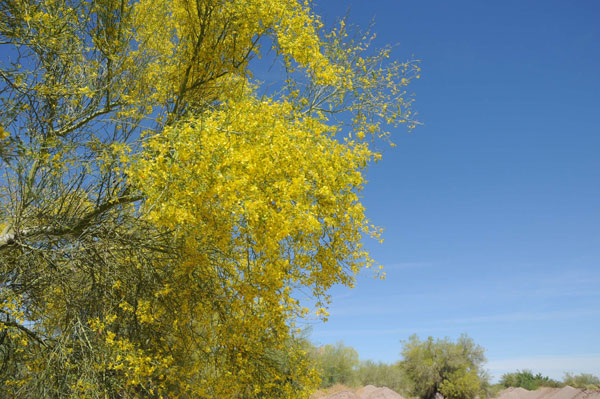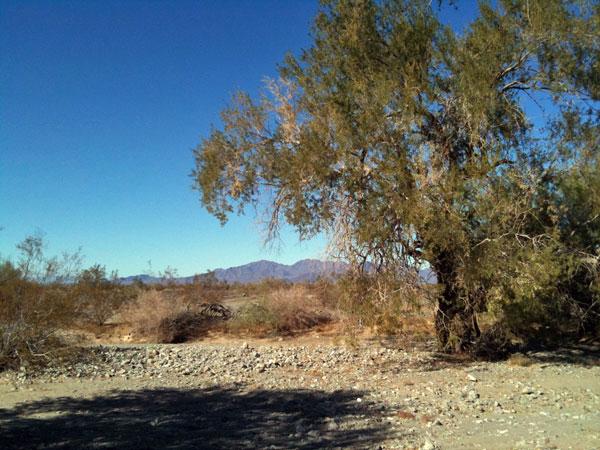Evolutionary Hotspots in the Mojave Desert
April 19, 2013 - An important new study about genetic diversity in the desert and overlap with large-scale energy development.
Genetic diversity within species provides the raw material for adaptation and evolution. Just as regions of high species diversity are conservation targets, identifying regions containing high genetic diversity and divergence within and among populations may be important to protect future evolutionary potential. When multiple co-distributed species show spatial overlap in high genetic diversity and divergence, these regions can be considered evolutionary hotspots. We mapped spatial population genetic structure for 17 animal species across the Mojave Desert, USA. We analyzed these in concurrence and located 10 regions of high genetic diversity, divergence or both among species. These were mainly concentrated along the western and southern boundaries where ecotones between mountain, grassland and desert habitat are prevalent, and along the Colorado River. We evaluated the extent to which these hotspots overlapped protected lands and utility-scale renewable energy development projects of the Bureau of Land Management. While 30–40% of the total hotspot area was categorized as protected, between 3–7% overlapped with proposed renewable energy project footprints, and up to 17% overlapped with project footprints combined with transmission corridors. Overlap of evolutionary hotspots with renewable energy development mainly occurred in 6 of the 10 identified hotspots. Resulting GIS-based maps can be incorporated into ongoing landscape planning efforts and highlight specific regions where further investigation of impacts to population persistence and genetic connectivity may be warranted.
Citation:
Vandergast, AG, RD Inman, KR Barr, KE Nussear, TC Esque, SA Hathaway, DA Wood, PA Medica, JW Breinholt, CL Stephen, AD Gottscho, SB Marks, WB Jennings, RN Fisher. 2013. Evolutionary hotspots in the Mojave Desert. Diversity 5(2): 293-319. doi: 10.3390/d5020293
More:
http://www.werc.usgs.gov/ProductDetails.aspx?ID=4887
Carbon Sequestration in Deserts

^Palo verde blooming in California's Colorado Desert.
March 11, 2011 - Dr. Michael Allen, Professor of Biology, and Plant Pathology and Microbiology, University of California at Riverside, put out a paper on the research needs in desert ecology raised in the face of large-scale renewable energy development. These research needs include more studies in how climate change will shift species and habitats; sources and recharge of groundwater pumped by solar projects; persistence of rare species; invasive plants; and Carbon sequestration in desert vegetation and soils. All these areas have many unknowns, and more research should be undertaken before land managers make sweeping decisions that will alter thousands of acres of desert ecosystems and hydrology for decades to come.
Solar Power in the Desert: Are the current large-scale solar developments really improving California's environment? Gaps in Desert Research >>Download the 992 KB PDF file.
Also read it on Scribd:
http://www.scribd.com/doc/50559956/Solar-Power-in-the-Desert-Michael-Allen
Excerpt:
"Many of the areas that are proposed to be developed for the solar development include Microphyll woodlands. The dominant plants (legume trees) have deep roots capable of reaching groundwater (several meters). When desert plants grow, they absorb carbon dioxide. The carbon (C), as sugars, moves into roots and soil organisms. Carbon dioxide is respired back into the soil, part of which reacts with calcium (Ca) in the soil to form calcium carbonate. This is how our desert sequester large amounts of C and thus
function to reduce atmospheric CO2. The magnitude of this carbon storage process is still a crucial research question and remains unknown for our California deserts. However, values of up to 100g/m2/y of C-fixation are reported from deserts in Baja and Nevada (Serrano-Ortiz et.al. 2010). After vegetation is removed to make way for solar arrays, carbon dioxide will be left to return to the atmosphere that ordinarily would have been used to form soil organic matter buried up to several meters deep, or released by
roots and soil microbes as soil CO2, which in turn, binds with soil Ca to form caliche.
"Our deserts have large amounts of CO2, stored as caliche (CaCO3). The amount of C in caliche, when accounted globally, may be equal to the entire C as CO2 in the atmosphere."
^Desert ironwood trees by the McCoy Mountains.

